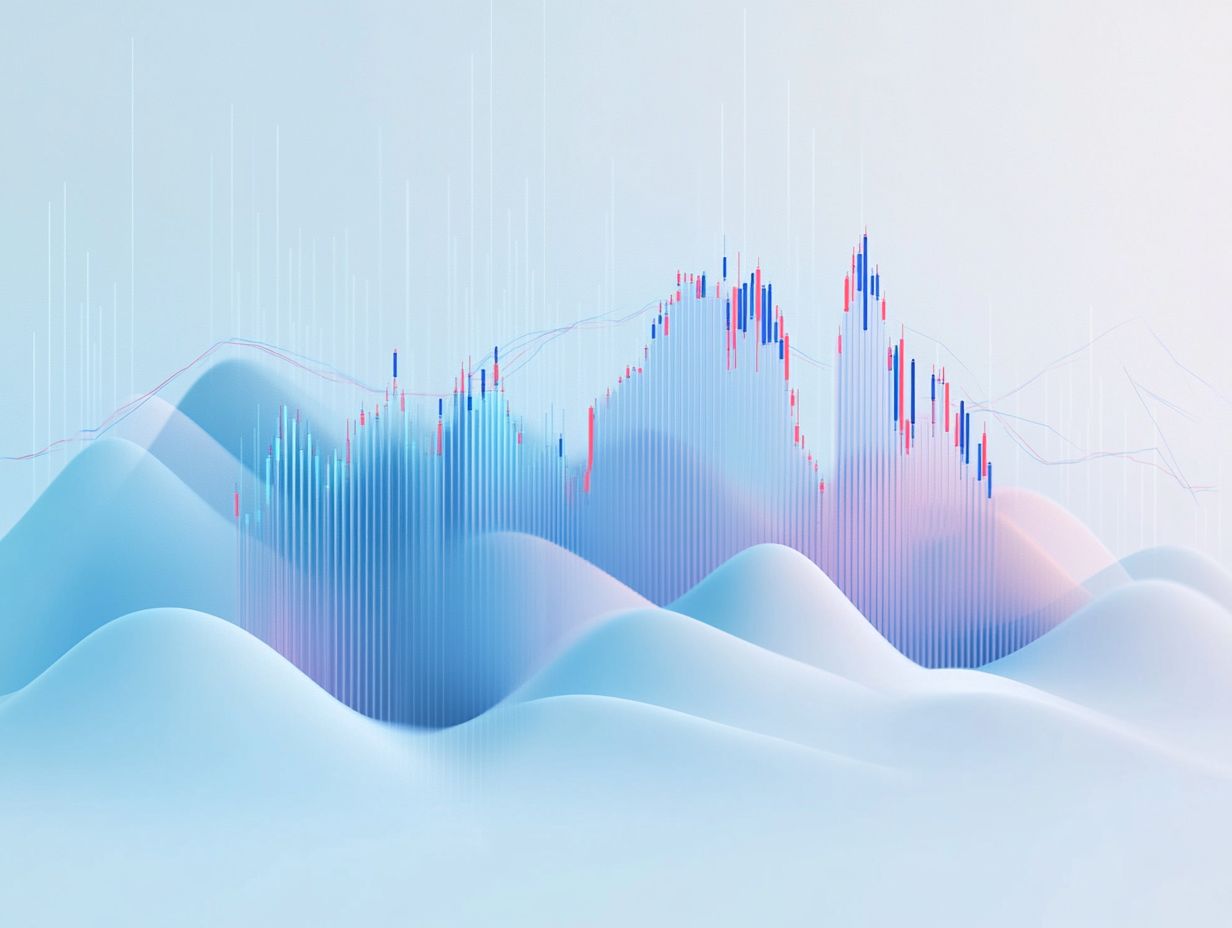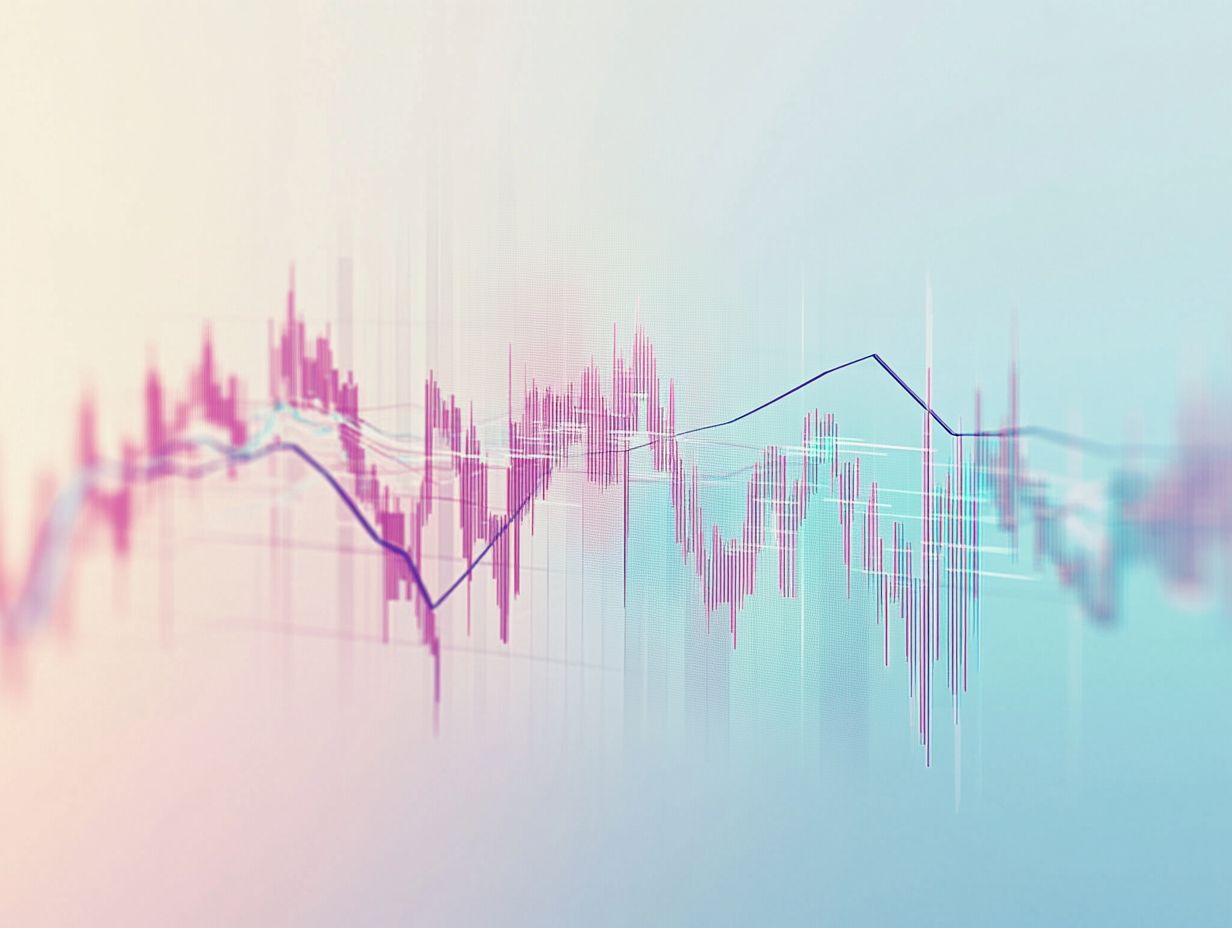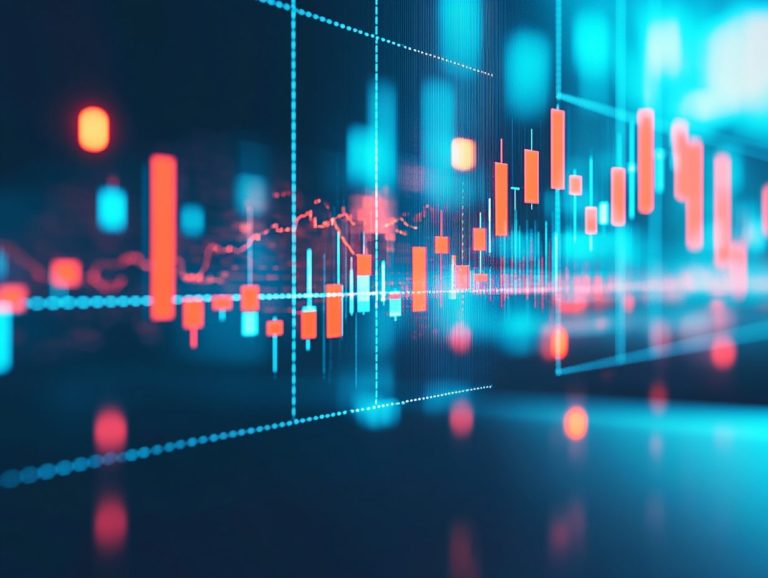The Role of Volume in Technical Analysis
Let s dive into how understanding volume can supercharge your trading strategies!
Technical analysis is an essential tool for you as a trader or investor, helping you make well-informed decisions in the financial markets.
At the core of this analysis lies a frequently overlooked component: volume. Grasping how volume interacts with price movements can unveil profound insights into market trends and the strength of price actions.
This article delves into the definition and significance of volume, various volume indicators, and techniques for interpreting volume data. You ll learn how volume can confirm trends and explore its limitations, empowering you with the knowledge to refine your trading strategies.
Immerse yourself in this exploration to uncover the pivotal role volume plays in technical analysis.
Contents
- Key Takeaways:
- Why Volume Matters in Trading
- Volume Indicators
- Interpreting Volume in Technical Analysis
- Using Volume to Confirm Trends and Patterns
- Limitations of Volume in Technical Analysis
- Frequently Asked Questions
- Why Volume Matters in Technical Analysis
- Why is Volume Important in Technical Analysis?
- How is Volume Used in Technical Analysis?
- What are the Different Types of Volume Indicators Used in Technical Analysis?
- Can Volume Be Used as a Standalone Indicator in Technical Analysis?
- How Can Changes in Volume Affect Technical Analysis?
Key Takeaways:

- Volume is crucial as it reflects market activity and helps identify price movements.
- Various volume indicators, like volume bars and on-balance volume, assist traders.
- Interpreting volume requires a mix of techniques and market knowledge.
Why Volume Matters in Trading
Grasping the significance of volume in technical analysis is essential for you as an investor maneuvering through the intricate landscapes of financial markets. Volume analysis provides invaluable insights into market activity, enabling you to assess the strength of price movements and make well-informed trading decisions.
As a technical analyst, you can use trading volume as a fundamental tool to validate trends, whether they lean bullish or bearish, while also shedding light on investor sentiment within the market.
By monitoring volume in conjunction with price movements, you position yourself to better identify liquidity levels how quickly assets can be turned into cash and potential price reversals. This makes volume essential for successful trading strategies.
Explanation of Technical Analysis
Technical analysis is a smart way you can employ to evaluate securities by scrutinizing the statistics generated through market activity, primarily focusing on price movements and trading volume. This analytical approach gives you the power to make informed trading decisions, as it emphasizes understanding market strength and investor sentiment while sidestepping the intrinsic value of the security itself.
By looking into historical data, technical analysis unveils insights into price trends, which can signal potential future movements. You can harness a variety of tools, such as candlestick charts and moving averages, to accurately identify those crucial entry and exit points.
These visual representations enable you to recognize patterns and market behaviors, which act as critical indicators of shifts in sentiment. As a result, your goal as a technical analyst is to eliminate emotional bias from your decisions, leaning solely on historical price action and volume trends to anticipate market dynamics and refine your trading strategies.
Definition and Importance of Volume
Volume, in the realm of trading, represents the total quantity of securities exchanged over a specific timeframe, acting as a vital indicator of market activity.
This metric offers valuable insights into the liquidity of financial markets, showcasing how effortlessly assets can be bought or sold without significantly swaying their price. When trading volume is high, it often points to robust investor interest and confidence in the market, facilitating smoother entry and exit for participants. On the flip side, low volume can signal hesitation or a lack of conviction among investors, hinting at potential price fluctuations on the horizon.
Analyze trading volume with price movements to gain a clearer understanding of investor sentiment, spot patterns that may foreshadow future trends, and enhance your decision-making process.
Volume Indicators

Volume indicators serve as crucial instruments for you as a technical analyst, allowing you to interpret trading volume data effectively and make well-informed trading decisions.
Start incorporating volume analysis today to elevate your trading skills!
Types of Volume Indicators
There are several types of volume indicators. These tools provide valuable insights into trading volume dynamics and market behaviors.
Understanding these indicators can greatly influence your trading decisions. For instance, On-Balance Volume (OBV) combines price and volume to signal whether a security is being accumulated or distributed.
This often helps identify bullish or bearish trends. Another essential tool, the Average True Range (ATR), measures market volatility and helps anticipate price movements based on volume patterns.
The Chaikin Money Flow (CMF) combines volume and price analysis. It reveals the buying or selling pressure over a specified period.
Incorporating these indicators into your trading strategies can elevate your market analysis. This allows for more informed choices.
Interpreting Volume in Technical Analysis
Volume data is crucial for understanding how market participants react to price movements. It provides insights into trend confirmation and enhances your trading strategy.
How to Analyze Volume Data
Analyzing volume data requires a methodical approach. You need to connect volume charts with price movements effectively.
Start by examining volume charts, which show the quantity of assets traded over a specific timeframe. Look for spikes in volume that often coincide with significant price movements.
For example, a sudden surge in volume during a price breakout can indicate strong bullish sentiment. This suggests the upward trend has potential to continue.
Conversely, declining volume with rising prices may signal weakening momentum. This acts as a warning for possible reversals.
Techniques like volume trend analysis and indicators such as the Volume Moving Average can refine your insights. They help in identifying optimal entry or exit points.
Using Volume to Confirm Trends and Patterns

Using volume to confirm trends and patterns is vital in technical analysis. This allows you to validate your trading decisions confidently.
Paying attention to volume provides invaluable insights. It enhances your trading strategy and reinforces your market understanding.
Examples of Volume Confirmation
Volume confirmation occurs when an increase in trading volume supports a price rise in a bullish trend or a price drop in a bearish trend.
For example, during a bullish breakout, if a stock price exceeds a resistance level with high volume, traders see this as a strong momentum signal. They may choose to increase their buy positions.
On the other hand, in a bearish context, a steep decline in stock price alongside rising volume suggests increasing selling pressure. This may lead traders to consider short positions.
Patterns like head and shoulders or double tops gain credibility with accompanying volume spikes. These elements support more reliable trading strategies based on confirmed price actions.
Limitations of Volume in Technical Analysis
While volume is a valuable tool in technical analysis, it has limitations. Understanding these nuances helps prevent misinterpretations of price movements.
Grasping these concepts allows you to make more informed trading decisions.
Factors that Can Affect Volume Data
Several factors can influence volume data, shaping how you interpret market activity and price movements.
For example, major news events like corporate earnings reports or geopolitical tensions can trigger sudden spikes in trading volume. Stay alert! When significant economic indicators are announced, they often elicit strong reactions from investors, causing trading activity to surge or dip based on the perceived implications for the market.
Fluctuations in liquidity, influenced by broader market conditions or shifts in government actions that affect how money is managed in the economy, can distort your volume interpretations.
These elements are intricately linked to investor sentiment. When excitement or fear runs high, increased trading activity ensues, ultimately impacting overall market behavior and volatility.
Frequently Asked Questions

Why Volume Matters in Technical Analysis
The role of volume in technical analysis is to measure the level of activity or participation in a particular stock or market. Understanding the significance of volume in trading helps traders and investors determine the strength of price movements and potential trend reversals.
Why is Volume Important in Technical Analysis?
Volume is important in technical analysis because it provides confirmation for price movements. A price movement accompanied by high volume is considered more significant and reliable than a movement with low volume.
How is Volume Used in Technical Analysis?
Volume is used in technical analysis to confirm patterns and trends identified by other indicators. It also helps identify potential market tops or bottoms and analyze the strength of breakouts.
What are the Different Types of Volume Indicators Used in Technical Analysis?
The three main types of volume indicators used in technical analysis are volume bars, on-balance volume (OBV), and volume weighted average price (VWAP). Each of these indicators provides different insights into market activity and can inform trading decisions.
Can Volume Be Used as a Standalone Indicator in Technical Analysis?
No, volume should not be used as a standalone indicator in technical analysis. It is best used in combination with other technical indicators to provide confirmation and additional insights into market activity.
How Can Changes in Volume Affect Technical Analysis?
Changes in volume can greatly affect technical analysis, as they can signal shifts in market sentiment and potential trend reversals. Keep an eye on volume changes; they can guide your next trade! A sudden increase or decrease in volume can also indicate the beginning of a new trend or the end of an existing one.






